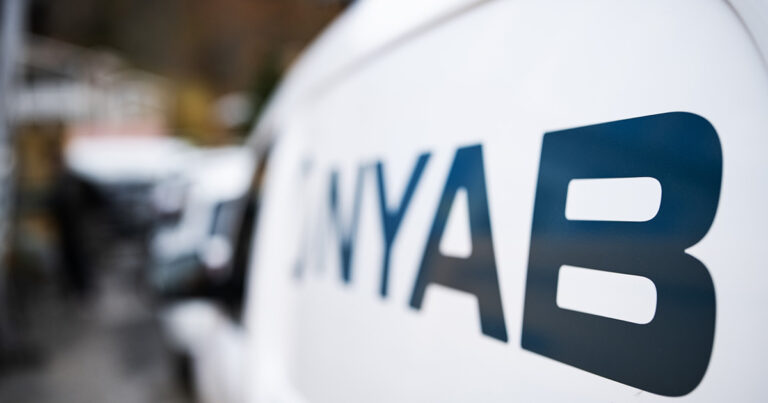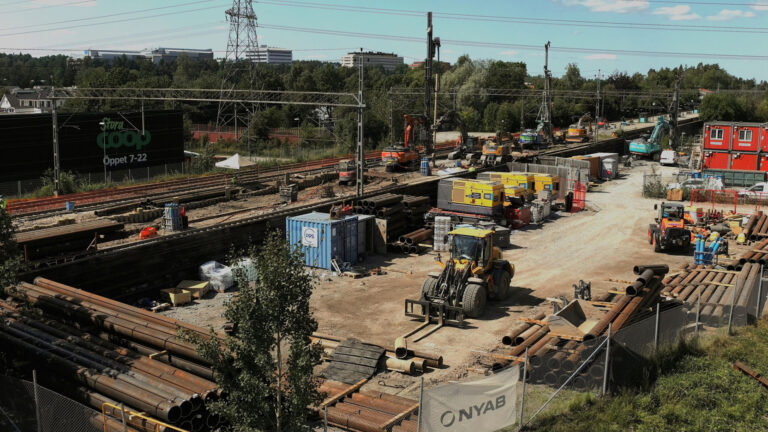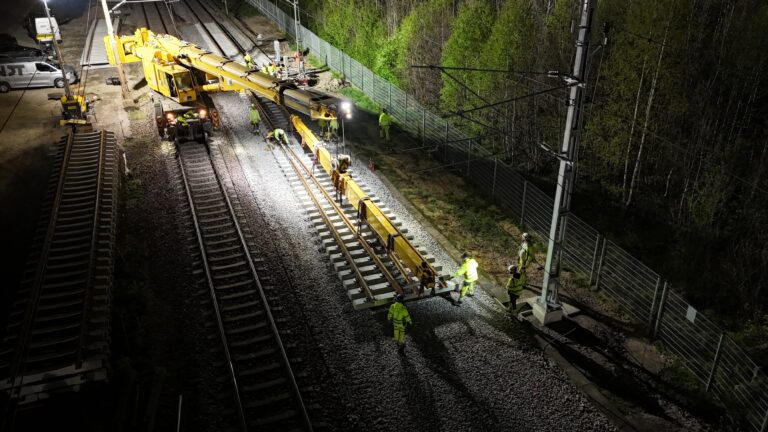NYAB starts Stockholm City’s first fully electrified street work project
30.09.25When NYAB converts city streets Mäster Samuelsgatan and Jakobsbergsgatan into pedestrian areas, it will be done with requirements for clear emission limits. The procurement is the first of its kind for the City of Stockholm where clear requirements and boundaries have been established to ensure that both machinery and deliveries are electric-powered. NYAB is proud to have earned the city’s trust and to contribute to the development of the industry, and to improve air quality in the city.
“We look forward to executing the project and having the opportunity to contribute to a more electrified construction industry,” says NYAB’s project manager Mattias Blomqvist.
The project is also taking place in an area designed to become a pedestrian zone and thus inherently emission-limited. The project aims to create a safer and more pleasant street environment where pedestrians will be prioritized. The area will undergo a significant upgrade and become much more accessible as uneven ground levels will be removed. The entire surface will also be provided with ground heating so that snow and ice will melt during the winter. The project is an important step in Stockholm’s – and Sweden’s – transition to a more environmentally friendly construction industry, and will be completed in September 2026.
“This is a very exciting project with high ambition. We are happy to show that it is possible to build in this way and to be part of the technological development,” says Blomqvist, whose team started the project in September 2025.
During the procurement phase, NYAB had continuous discussions and meetings with the city to determine what was technically and economically feasible. Running a project with requirements for electrically powered machines, deliveries and working methods in the center of a major city requires thoughtful planning and carefully defined boundaries.
“We are positive that customers are moving the development towards fully electrified construction projects. An electric excavator, for example, costs significantly more than a conventional one, so there must be demand so that suppliers dare to invest.”
Defining boundaries in a new reality
The procurement has been permeated by good cooperation with the client and has been both educational and challenging. It has also given NYAB the opportunity to contribute to the development of standards and processes for the future. One issue that arose was how to handle the limited availability of certain types of electrically powered machines. Some machines are not yet available in electric versions, and others exist only in very limited numbers. To avoid potential bottlenecks, NYAB and the City’s Traffic Office have evaluated alternative solutions together.
“We have been creative and dared thinking in new ways for how to execute the project. And we have had many good dialogues with leading suppliers. I would also like to praise the Traffic Office for utilizing the contractors’ knowledge and experience when shaping the project requirements. That kind of cooperation with an open dialogue is key to achieving the best possible result,” says Blomqvist.
There have also been many good dialogues with property owners in the area throughout the procurement process, which has been essential for meeting the required level of quality. The project will be carried out in an area with tight spaces, traffic and many pedestrians. At the same time entrances, outdoor seating and garage ramps need to be accessible throughout the construction period. To solve these challenges, flexibility and understanding have been crucial.
Photo: The City of Stockholm


